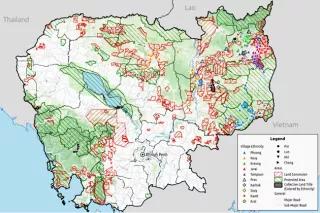
Indigenous communities in Cambodia are legally recognized and should thus have been protected by the Land Law and the Forestry Law, entitling them to communal land titles. A number of national and international instruments including the Cambodian Land Law of 2001, the UN Declaration on the Rights of Indigenous Peoples, the ILO Convention no. 169 on Indigenous and Tribal Peoples and the World Bank Safeguard Policy recognize both collective and individual Indigenous Peoples’ rights.
Indigenous peoples are estimated to be managing more than 4 million hectares of Cambodia’s forests, lands and ecosystems, and have preserved stable environmental conditions in many other parts of the country. Over the last two decades, however, at least 2.1 million hectares of the country’s land have been transferred to more than 300 ELCs or companies from various countries, for commercial large-scale agricultural investments, in the form of Economic Land Concessions. Indeed, with each of these concessions, the government is allowed to lease up to 10,000 hectares of state land for up to 99 years – a program that currently affects between 400,000 and 700,000 Cambodians. As many of these concessions are situated in areas populated by indigenous peoples, the latter have been particularly impacted by these policies.
This paper will examine the failure of current policies of the Cambodian government, the World Bank and the UN, as those policies have led to a loss in culture, community cohesion and traditional governance structures of indigenous peoples that, as we shall see, have not been fully protected.
For full reading of this article, Please click here to download the PDF file.